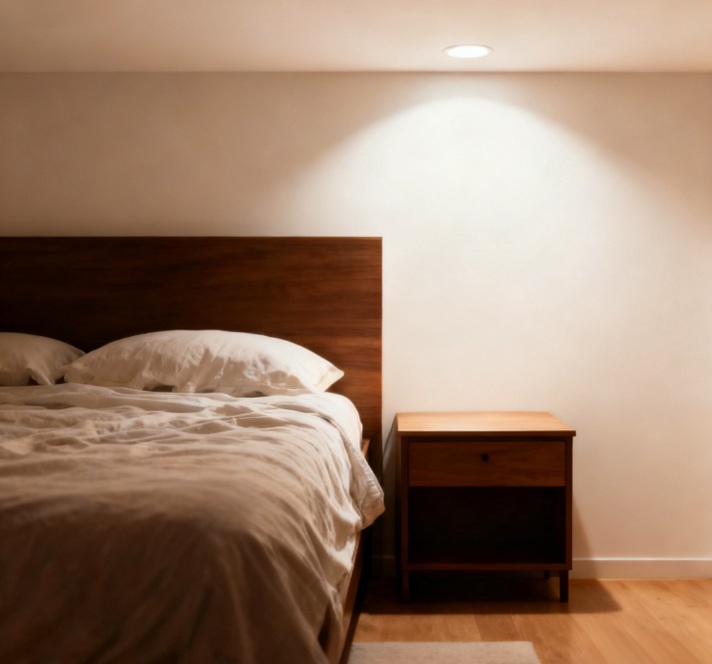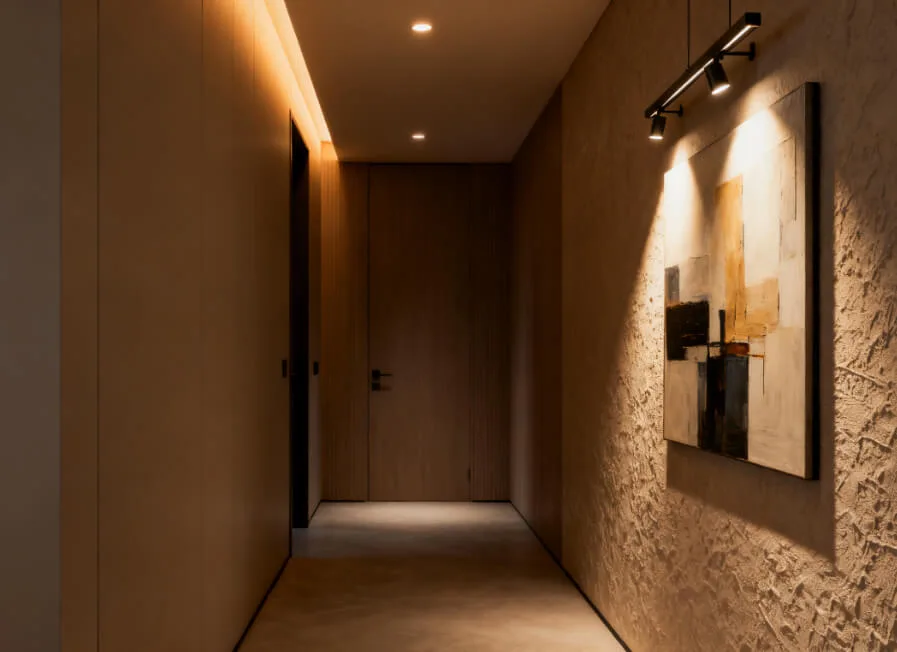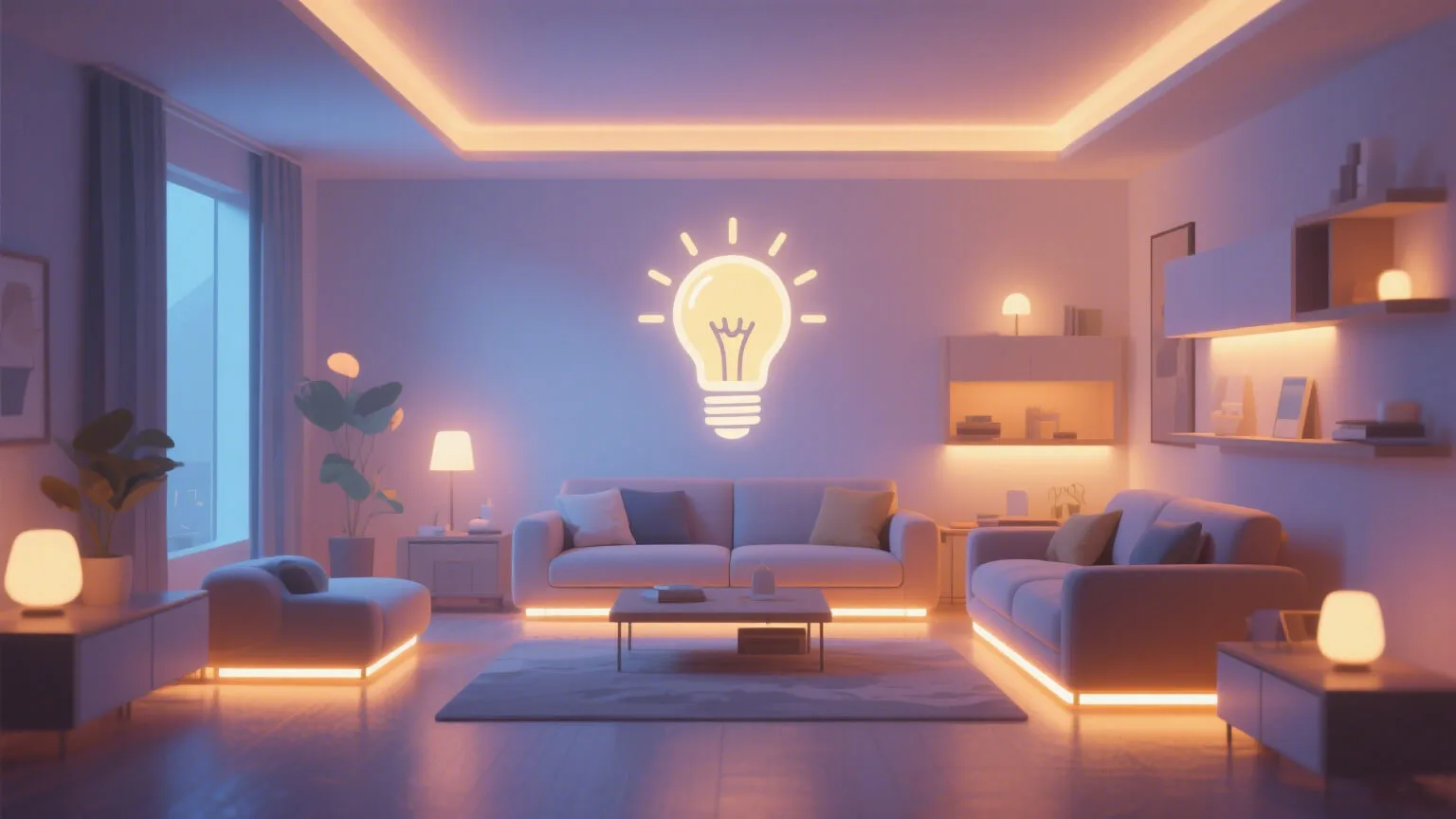In interior decoration, lighting design is often an overlooked yet crucial aspect. “Lumens,” as the core indicator for measuring light brightness, are gradually becoming the focus of homeowners during the decoration process. Many homeowners proactively request “high-lumen” configurations when selecting lighting fixtures and planning lighting schemes, as if high lumens are synonymous with high-quality lighting. But what special significance do lumens hold in interior decoration? What practical needs lie behind homeowners’ insistence on pursuing high lumens? This blog will answer these questions one by one and help you understand the true value of high lumens in interior decoration.

I. Lumens in Interior Decoration: More Than Just a Measure of “Brightness”
In the context of interior decoration, lumens (abbreviated as lm) still refer to the unit for measuring the total amount of light emitted by a light source per unit time. However, their role is far more than simply “determining whether the light is bright enough.” If we compare an indoor space to a painting, lumens are like the “total amount of paint” for the brush—they determine how many details this “lighting painting” can present and what kind of atmosphere it can create.
Many homeowners confuse “lumens” with “watts,” especially when choosing traditional lighting fixtures. They often assume that “the higher the wattage, the brighter the light.” But in today’s era where LED lights are mainstream, this perception is already outdated. For LED lights with the same wattage, the lumen values can vary significantly—for example, a 10-watt LED ceiling light may have a lumen value of only 800 lm or as high as 1200 lm, and the latter will be noticeably brighter. Therefore, when selecting lights for interior decoration, looking at lumens is more accurate than looking at watts; it helps you accurately determine whether a lighting fixture can meet the lighting needs of a space.
At the same time, different indoor spaces have different requirements for “effective lumens.” The so-called “effective lumens” refer to the actual amount of light from a fixture that illuminates the space, rather than the “theoretical lumens” marked on the fixture itself. For instance, a chandelier with a lampshade will have some light blocked by the shade, resulting in effective lumens lower than the marked value; in contrast, a downlight without obstruction will have effective lumens closer to the marked value. This is why, during interior decoration lighting planning, it is not only necessary to choose high-lumen fixtures but also to calculate effective lumens based on the type of fixture and installation location to ensure the lighting effect meets standards.
II. Four Core Reasons Homeowners Pursue High Lumens in Interior Decoration
Homeowners’ pursuit of high lumens in interior decoration is not a blind trend but stems from practical needs for living experiences. From daily activities to space atmosphere, and from visual health to functional practicality, high lumens add value to indoor spaces in multiple dimensions. Specifically, they can be divided into the following four scenarios:
1. Meeting Functional Needs: Enhancing Efficiency in “Practical Spaces”
For spaces centered on “practicality” such as kitchens, home offices, and bathrooms, high lumens are key to improving usability.
- Kitchen: As the core area for daily cooking, low-lumen lighting can cause many inconveniences. For example, if the main kitchen light has a lumen value below 1000 lm, it is easy to create shadows on the worktop when cutting vegetables or stir-frying, making it difficult for homeowners to see the state of ingredients—they might cut their fingers while chopping or fail to judge the heat accurately while cooking. However, a combined lighting setup (main light + under-cabinet spotlights) with a lumen value of 1500-2000 lm can evenly illuminate the entire kitchen, eliminating blind spots in key areas such as the worktop, sink, and stove, making the cooking process safer and more efficient.
- Home Office: When working or reading at a desk for long periods, low-lumen lighting can keep the eyes in a state of fatigue, which may lead to decreased eyesight over time. If the main light in the home office has a lumen value below 800 lm and the desk lamp also lacks sufficient lumens, homeowners will clearly feel “unable to see the text in books clearly” or “experience glare on the screen.” By increasing the lumen value of the main office light to 1200-1500 lm and matching it with an adjustable desk lamp of 300-500 lm, the lighting on the desk can be even and soft, reducing eye fatigue and improving work and reading efficiency.
- Bathroom: This is especially true for windowless bathrooms (or those with small windows). Low-lumen lighting can make the space feel oppressive and may also affect daily use. For example, if the bathroom light has a lumen value below 800 lm, it is easy to have “color distortion” when applying makeup—the foundation color may look suitable under the light but appear too white or too dark when going out. When taking a shower, insufficient light may also make it hard to see if there is standing water or dirt on the floor. A dedicated bathroom light (waterproof and fog-proof) with a lumen value of 1000-1200 lm can make the space bright and transparent, meeting various needs such as makeup and cleaning.
2. Optimizing Spatial Vision: Making “Small Spaces” Appear Larger and “Dark Spaces” Brighter
In interior decoration, lighting has a far greater impact on the visual effect of a space than imagined, and high lumens are a “tool” for optimizing spatial vision.
- Small Spaces: One of the biggest headaches for homeowners of small apartments is that “the space feels small and oppressive.” If the lighting lumens are insufficient—for example, the main living room light has a lumen value below 1000 lm—the already small living room will feel even more cramped. However, choosing a ceiling light with a lumen value of 1500-2000 lm or adopting a “no main light” design (a combination of multiple high-lumen downlights and spotlights) can fill the entire space with light, reduce shadow blind spots, and visually extend the height and width of the space, making the small apartment look more spacious.
- Spaces with Dark Color Schemes: In recent years, dark-color decoration styles such as industrial style and wabi-sabi style have become very popular. However, if the lighting lumens are insufficient for such decorations, the space will feel “dim and dull.” For example, in a living room with dark gray walls, if the main light has a lumen value of only 800 lm, the space will feel as oppressive as a “cloudy day” when the windows are closed during the day. By increasing the lumen value of the main light to over 2000 lm and matching it with local ambient lights, you can not only highlight the texture of the dark-color decoration but also prevent the space from being too dim, creating an “elegant yet not oppressive” atmosphere.
- Spaces Without Natural Light: For spaces lacking natural light such as basements, walk-in closets, and corridors, high lumens are even more of a “necessity.” For example, in basement decoration, if the lighting lumen value is below 1200 lm, people will feel a “sense of oppression in the underground space,” and even if exquisite furniture is placed, it will be difficult to showcase its beauty. By using overall lighting with a lumen value of 1500-2500 lm plus local accent lighting, you can simulate the brightness of natural light, allowing spaces without natural light to also have a comfortable visual experience.
3. Improving Living Comfort: Eliminating “Uneven Lighting” and Protecting Visual Health
A comfortable living experience is inseparable from even and sufficient lighting, and high lumens can effectively solve the problem of “uneven lighting” and protect the visual health of family members.
- Avoiding “Brightness Contrast”: During the decoration of some families, only the lumens of the main light are emphasized, while local lighting is ignored, leading to “brightness contrast” in the space. For example, the main living room light may be very bright (2000 lm), but the corner of the sofa and the balcony area may be very dark (lumen value below 300 lm). When homeowners read on the sofa or dry clothes on the balcony, they need to frequently adapt to changes in brightness, which can easily cause eye discomfort. By adding high-lumen auxiliary lights (such as floor lamps with 500-800 lm or balcony ceiling lights) in these local areas, the lighting in the entire space can be more even, reducing visual fatigue.
- Adapting to the Needs of Different Groups: Homeowners with elderly people or children at home have a more urgent need for high lumens. The eyesight of the elderly gradually deteriorates, and in low-lumen lighting, it is easy for them to fail to see obstacles on the floor, increasing the risk of falls. Children are in a critical period of eyesight development, and prolonged stay in a low-lumen environment while doing homework or playing will increase the burden on their eyes. For example, if the main light in a children’s room has a lumen value below 1000 lm and the desk lamp has a lumen value below 300 lm, it will have an adverse impact on the child’s eyesight. By increasing the lumen value of the main light in the children’s room to 1200 lm and matching it with an eye-protection desk lamp of 400 lm, you can create a healthy lighting environment for the child.
4. Adapting to Diverse Scenarios: Allowing “Single Spaces” to Meet Multiple Needs
Nowadays, the functions of indoor spaces are becoming more flexible, and a single space may need to meet multiple needs such as “relaxation, work, and socializing.” High lumens enable spaces to better adapt to these diverse scenarios.
- Living Room: The living room is no longer just a place for watching TV; it may also serve as a home office for homeowners, an online class area for children, or a gathering spot for friends. If the main living room light has a lumen value of only 1000 lm, there will be obvious glare on the screen when working from home, affecting work efficiency; and the space will feel “not bright enough” when friends gather. By choosing a dimmable main light with a lumen value of 1800-2500 lm and matching it with ambient light strips of 100-200 lm, you can easily switch scenarios—lower the lumens to 800-1000 lm when watching TV to create a warm atmosphere, and increase the lumens to 1800-2500 lm when working or gathering to meet functional needs.
- Bedroom: Although the bedroom is mainly for “rest,” it also needs to meet needs such as makeup and reading. If the main bedroom light has a lumen value below 800 lm and there are no auxiliary lights, homeowners will be unable to see details clearly when applying makeup at the dressing table, and will need to lean close to the light when reading before bed. By installing a main bedroom light with a lumen value of 1000-1200 lm, matching it with a 500-lm vanity light for the dressing table, and 300-400 lm bedside reading lights, you can meet multiple scenario needs such as rest, makeup, and reading, making the bedroom more functional.
III. Misconceptions About Choosing Lumens in Interior Decoration: High Lumens ≠ “The Brighter, the Better”
Although high lumens have obvious advantages in interior decoration, homeowners often fall into the misconception that “the higher the lumens, the better” when making choices. In fact, the selection of lumens for interior decoration needs to be “adapted to local conditions.” Blindly pursuing high lumens may instead affect the living experience. The following two misconceptions require special attention:
1. Ignoring “Glare Issues”: High Lumens ≠ “Non-Dazzling”
Some homeowners choose high-lumen fixtures without anti-glare designs in pursuit of “brightness,” only to end up with “dazzling” lights that affect living comfort. For example, installing a 2000-lm ceiling light without a lampshade in the bedroom will cause strong light to directly irritate the eyes when turning on the light at night, affecting sleep. Installing high-lumen spotlights in the dining room with improper angles will cause direct light to hit the dining table, distorting the color of food and making diners feel dazzled.
Therefore, when choosing high-lumen fixtures, it is essential to pay attention to “anti-glare design”—for example, choose fixtures with frosted lampshades, spotlights with anti-glare coatings, or adjust the installation angle of fixtures to avoid direct light hitting the human eyes. This way, you can not only ensure the sufficient lighting brought by high lumens but also avoid glare problems, making the light softer and more comfortable.
2. Ignoring “Space Adaptation”: Not All Spaces Need “Ultra-High Lumens”
Different spaces have different functions and sizes, so their needs for high lumens also vary. Blindly equipping all spaces with ultra-high-lumen fixtures will not only increase decoration costs but also cause energy waste and even damage the space atmosphere.
- For example, if the lumen value of a bedroom exceeds 1500 lm, the space will be too bright, lacking a warm atmosphere and affecting sleep quality.
- For an entrance hall, as a transitional space, a lumen value of 800-1000 lm is sufficient. If a 2000-lm high-lumen fixture is installed, homeowners will be instantly “dazzled” by the strong light when entering the door, resulting in a poor experience.
The correct approach is to determine the lumen requirement based on the function and size of the space: for example, a small living room (less than 15 square meters) only needs a lumen value of 1500-1800 lm; a large living room (more than 25 square meters) can have a lumen value increased to 2000-2500 lm; while spaces such as bedrooms and entrance halls are more suitable with a lumen value controlled at 800-1200 lm.
Conclusion: The Essence of High Lumens in Interior Decoration—”Comfortable Lighting Adapted to Needs”
Homeowners’ pursuit of high lumens in interior decoration is not simply about pursuing “brightness,” but about obtaining “comfortable lighting adapted to needs”—it can make kitchen cooking safer, home office work more efficient, make small spaces appear larger and dark spaces brighter, and also meet the diverse living needs of family members while protecting visual health.
However, when choosing lumens for interior decoration, it is also necessary to view them rationally and avoid falling into the misconception that “the brighter, the better.” By combining the function of the space, its size, and the needs of the occupants, and selecting high-lumen fixtures with anti-glare designs, you can ensure that the lighting truly serves the living experience. It is hoped that this blog can help you understand lumens in interior decoration, allowing the lighting design of your home to be both bright and comfortable, and creating your ideal living space!



